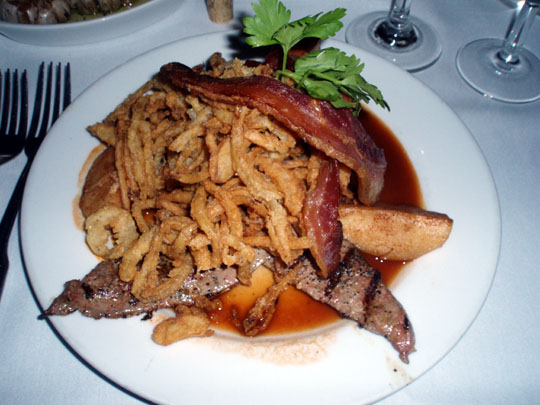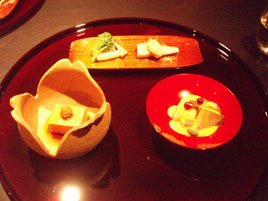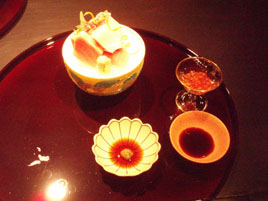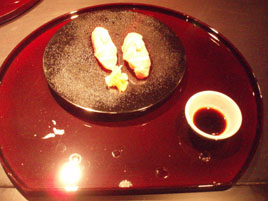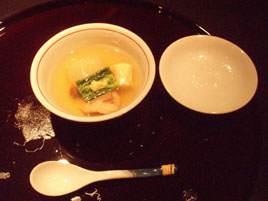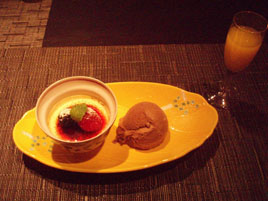Le Cirque
 Sunday, January 13, 2008 at 02:26PM
Sunday, January 13, 2008 at 02:26PM Note: This is a review of Le Cirque under Chef Christophe Bellanca, who left the restaurant in October 2008. Click here for a review under chef Olivier Reginensi, who is the chef as of 2012.
Click here for a review of the Café at Le Cirque.
*
Le Cirque is one of the few remaining bastions of classic old-French luxury in New York. Now in its third location, it was at various times a three or four-star restaurant, but critics hammered it when the current version opened in 2006. Frank Bruni and Adam Platt both returned two-star verdicts, which for this type of restaurant is equivalent to condemnation.
Much beloved of celebrities and the monied set, Le Cirque didn’t need Frank Bruni’s blessing. Owner Siro Maccioni could simply have shrugged, as the owners of the Four Seasons apparently did after a similar Bruni smackdown. Instead, he went to work. He fired chef Pierre Schaedelin, bringing in Christophe Bellanca to replace him. The review cycle is over, so Le Cirque is stuck with its two stars for now. But at least Adam Platt recognized the improvement in his 2007 year-end retrospective:
But perhaps the most impressive kitchen overhaul of all has taken place at Le Cirque, where Sirio Maccioni’s latest chef, Christophe Bellanca, has expanded the pricey, formerly stolid menu to include a whole variety of sophisticated, radically pricey new treats. The grandly impersonal room underneath the Bloomberg tower remains filled with the usual collection of grimly smiling contessas and aging plutocrats tottering to and fro in their pin-striped suits. But when I dropped in not very long ago, there were an impressive nine specials of the day on the menu, along with all sorts of newfangled entrées: dim-sum-size ravioli swollen with foie gras, carefully deboned portions of squab crusted with crushed walnuts, and ribbons of chestnut-flavored pappardelle decked with braised pheasant, which the plutocrats merrily supplemented one night (for a $185 fee) with shavings of white truffle shipped direct, via Maccioni’s fabled connection, from the hills of Alba.
(I don’t quite understand why, if he thinks the improvement is that significant, Platt does not also upgrade his two-star rating, but I’ll save that rant for another post.)
The bifurcated service at Le Cirque—one level for celebrities, another for the rest of us—is the stuff of legend. Upon her arrival in New York, Times critic Ruth Reichl was famously treated like dirt. Everything changed once Maccioni figured out who she was: “The King of Spain is waiting in the bar, but your table is ready.” Reichl demoted the restaurant to three stars. In the 2006 update, Frank Bruni encountered much the same attitude that Reichl did. So did the Amateur Gourmet, who wrote about his experience in a post called “Only a Jerk Would Eat at Le Cirque.”
Perhaps Maccioni has finally learned his lesson. When I visited with a friend for a year-end dinner, we saw no evidence of second-class service. Our table was ready immediately, and we weren’t seated in Siberia. Service was friendly and polished, but the large, busy space is not geared to long, quiet meals. I didn’t note the exact timing, but I felt that the multi-course tasting menu went by a tad quickly.
The clientele was a broad mix of young and old. We didn’t notice any celebrities, but a couple of middle-aged men were with lavishly dressed women who appeared to be a good deal younger than they. You can fill in the possibilities for yourself.
For a variety of reasons, it took me a month to get around to writing this blog post, and I’m afraid my recollections have dimmed somewhat. We ordered the tasting menu, which in general was impressive, with only a couple of dull spots (which most tasting menus have). The food is shown below in photo-essay format.
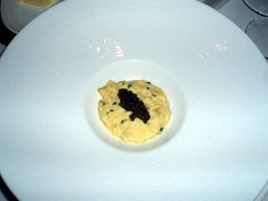
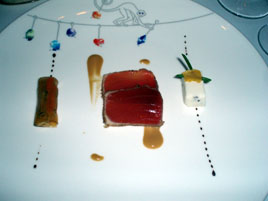
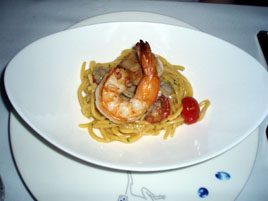
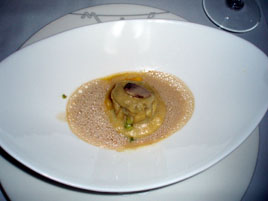

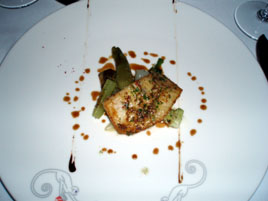


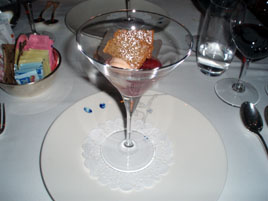


Le Cirque (151 E. 58th Street between Lexington & Third Avenues, East Midtown)
Food: ***
Service: **½
Ambiance: ***
Overall: ***



















